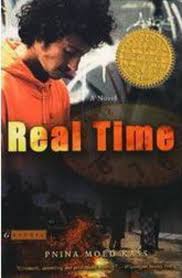Teen Read Week – Real Time
Listen to the Recess! Clip
| Author | Ramona Caponegro |
| Air Date | 10/20/2005 |

Real Time Transcript
How important is it that children learn to “read the world”1 along with the words on a page? More than 35 years ago, Paulo Freire, a Brazilian educator, introduced the teaching of critical literacy, a reading strategy that “promotes reflection, transformation, and action.”2 This strategy places an enormous premium on the students’ ability to interpret and to interact with the world around them. In teaching critical literacy, Freire stressed the careful examination of an author’s intentions, representations of characters, power relations, the importance of considering a story or situation from various perspectives, and the need to take action based on what has been learned. Some teachers now incorporate these concepts into lessons for children as young as kindergarteners.
For older students, however, critical literacy is used in the teaching of complex young adult novels, like Real Time, written by Pnina Moed Kass, an American who spent 35 years in Israel. In her book, Kass relates the events that led up to an explosion on a bus traveling outside Jerusalem, as well as the aftermath of the attack. Real Time examines more than a dozen different perspectives of this tragic event, including those of a Holocaust survivor, a German teenager searching for proof of his grandfather’s participation in World War II atrocities, a Russian kibbutz worker, an Israeli soldier, a would-be Palestinian suicide bomber, and a Palestinian doctor. Through these diverse perspectives, the humanity of all of those involved in the explosion, regardless of their politics or actions, is revealed, and, while the use of violence is never condoned in the book, Kass nevertheless presents it as a reality, however unfortunate, that exists in modern Israel as well as in other parts of the world. As one of her characters, Clive Burleigh, a news correspondent, poignantly reflects upon the wreckage, “But I’ve been here before […]. The same stretchers were being carried in Bosnia, in Rwanda, in Northern Ireland. [… [A]lthough there may be a sameness to war, each human being is a world unto himself.”3
Although Kass’ Real Time does not present her readers with a solution to the problem of violence, she does enable teens to “read” not only the individual worlds that each of her numerous characters inhabit, until the one fateful day when their private universes suddenly collide, but also to “read” the wider geographic, social, and political world that they live in together. Freire and others who teach critical literacy hope that young readers will act upon the discoveries such as those that they make in books like Real Time and work to change the real world around them.
Notes:
1 McLaughlin, Maureen, and Glenn L. DeVoogd. Critical Literacy: Enhancing Students’ Comprehension of Text. New York: Scholastic, 2004. 19.
2 McLaughlin, Maureen, and Glenn L. DeVoogd. Critical Literacy: Enhancing Students’ Comprehension of Text. New York: Scholastic, 2004. 14.
3 Kass, Pnina Moed. Real Time. New York: Clarion Books, 2004. 109.